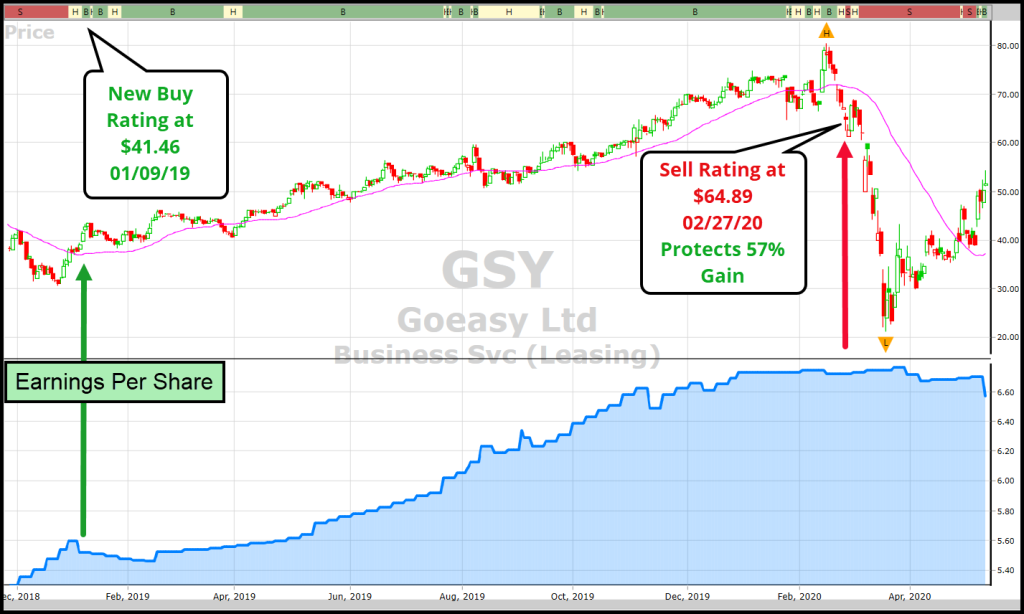Investors have never seen a market fall so far so fast as it did from February 21st to March 23rd. The VectorVest Composite CA Index fell 33.7%, and the TSX Composite shed 37.1%. As painful as it was for many investors, it served to remind us of our Founder Dr. Bart DiLiddo’s #1 Rule in a falling market: Preserve Your Assets.
When you consider risk as part of your investing plan, you have to decide a few things before you enter a trade. Above all, this must include your exit strategy. Here are a few other questions you should consider:
- HOW MUCH ARE YOU WILLING TO LOSE? As a maximum, Dr. DiLiddo suggests you should not lose more than 1% of your total account size on any single trade. If your account size is $50,000, do not lose more than $500 on the trade.
- WHAT IS YOUR “TRIGGER” FOR MAKING THE TRADE? Which VectorVest Market Timing signal will you use to tell you that you have the wind at your back? Will you only buy when there is a green light in the Color Guard as VectorVest recommends? Is your stock in a well-defined uptrend or is there a clear breakout pattern? Does it have a VectorVest Buy rating? Are Earnings rising? Is it part of a strong Sector or Industry Group? Requiring a trigger before you make the trade adds discipline to your trading.
- WHERE IS THE PROPER PLACE TO SET YOUR STOP? Having a plan for when to sell even before you place the buy order takes the emotion out of this difficult decision. It puts your mind at ease. First, remember, whatever Stop you decide is superseded by the 1% rule. So, how do you choose? A few things to consider: Is this a swing trade or a long-term investment? What is your tolerance for risk? Is the market in the blast-off phase where the MTI is near 0.60 or below, a trending phase where the MTI is nearing 1.0 and rising, or is it near the topping phase when the MTI is near or above 1.30 in Canada and 1.50 in the US? You will find many good choices for Stops in VectorVest’s Portfolio Manager, and here are just a few:* A fixed dollar Stop. Calculate a dollar stop using the 1% rule, or use VectorVest’s Stop-Price at the time of purchase,* For long-term trades, consider selling when price falls below its Stop-Price, at which time the SELL REC will be triggered,* Calculate a percent loss such as 7% for a swing trade and higher for a long-term trade,* A technical Stop. You can set your Stop at a price slightly below the low of the previous candle. Consider a tight trailing stop such a 5-7% for short-term trades and 15-25% for long-term investments, or use price targets with the ProfitLocker or ProfitLocker Pro for a more dynamic Stop that cuts your losses but allows your winners room to run. Other technical Stops include Support & Resistance, a break below a Moving Average or trendline, falling MACD or any other technical indicator including VectorVest’s RT or Relative Timing, one of my favourites.* Use the “Weed Your Portfolio” technique explained in Lesson 2 of the Successful Investing Quickstart Course on the Training Tab.
- HOW AND WHEN WILL YOU ADJUST A STOP? When the market is overbought, losing momentum or falling, you should consider selling at least some of your holdings. Start with your weakest positions. This reduces your exposure to substantial losses when too many of your initial Stops get hit. It also has the benefit of raising cash to take advantage of the next rally back up. Let the MTI graph and timing signals guide you. When you have gains to protect, you might consider switching to a tight trailing Stop or applying VectorVest’s proprietary Ratchet Stop. This selection triggers a Sell when a stock’s price has fallen below the highest Stop-Price since the date of purchase. You can set it up in Portfolio Manager to get alerts. Other choices, the Weed Your Portfolio video identifies four warning signs. When the market is falling, consider selling on the early warnings such as price falling below the 40-day Moving Average or RT falling below 1.00. Always remember, it’s okay to adjust your Stops higher, just never adjust them lower.Knowing when to sell a long position is one of the most difficult decisions you must make as an investor. That said, once you incorporate clear and unambiguous Sell rules into your trading plan, the easier it is to know when and HOW TO EXIT A TRADE.











I don’t know how you keep doing it. Another timely essay 3 days before a big drop. Perfect timing once again
Thanks Mike! I thought it might be helpful as a reference at any time, but it definitely turned out to be timely with a drop from overhead resistance on the MTI graph.
Timing could not have been better on this one. Since taking the retirement course I’ve been going through the process but was not clear on setting my stops. We spoke a lot of using the SELL recommendation and others but didn’t see how I could use those while at same time honoring the 1% rule. Your essay confirms that the 1% over-rules all the others. Removing each little barrier of confusion like this is so helpful.
Thanks again Stan!
Thanks Jerry!